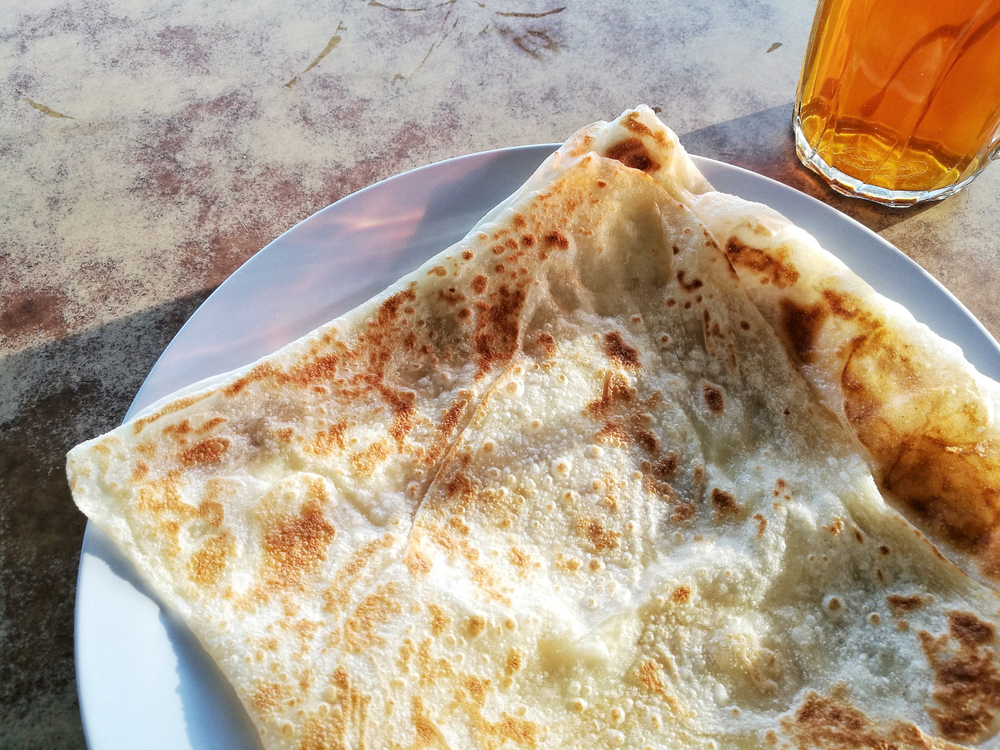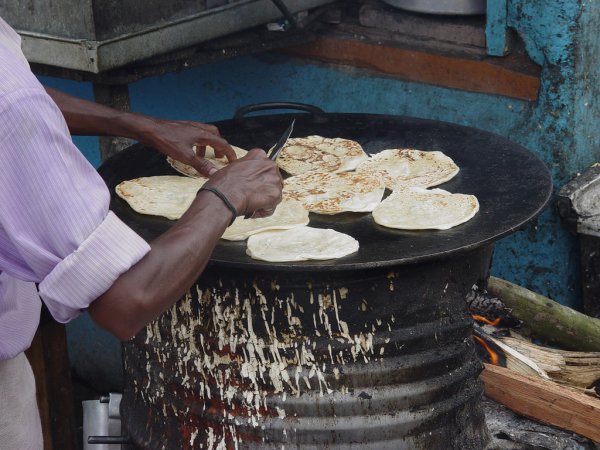Paratha
Originating on the Indian subcontinent, paratha continues to be a popular bread throughout the region and beyond. The word paratha is a combination of the words parat and atta, which together mean "layers of cooked dough." This is an accurate description, as paratha dough is folded in such a way that it creates thin layers that separate as the dough cooks. Paratha uses whole-wheat flour and is unleavened, characteristics that distinguish it from another popular Indian flatbread, naan.
Recipe Servings: 8 pieces
Prep Time
1 minute
+ 30 minutes resting
+ 30 minutes resting
Cook Time
20 minutes
Total Time
51 minutes
Vegetarian
Vegan
Gluten Free
Dairy Free
Kosher
Halal
Ingredients
- 2 cups (240 g) whole wheat flour, plus extra for dusting
- 2 tsp (10 ml) vegetable oil
- ¼ tsp (1.75 ml) salt
- ¾–1 cup (180–240 ml) water
- Ghee, as needed
Directions
- In a large mixing bowl, combine flour, oil, salt, and water. Mix thoroughly to make dough.
- Knead dough until soft and pliable. This can be done using a stand mixer with a dough hook or using one's moistened fingertips.
- Wrap dough in a clean, moist towel and let rest for 30 minutes.
- Cut dough into 8 pieces. Knead each piece for a short time; then roll each into a ball. Cover all balls with a cloth.
- Lightly dust a surface with flour. Remove a dough ball from covering, place on floured surface, and roll into a thin layer. Repeat for all balls, keeping dough covered in between.
- The following steps create the characteristic layers of the paratha. Return one rolled-out piece to the work surface. Apply ghee evenly all over the top surface of the dough with your fingers.
- Fold the left third of the dough in towards the center. Apply more ghee on the newly created surface.
- Fold over the right outer third of the dough so that it lies on top of the dough from the first fold. The dough should now form a long rectangular shape. Apply more ghee.
- Fold the top third of the rectangle down towards the center. Apply ghee.
- Fold the bottom third of the rectangle up and on top of the other fold, so the dough now forms a square. Apply ghee.
- Roll out this square evenly so it becomes quite thin.
- To prevent the dough drying out, repeat this process for three more balls so that four paratha are available to be fried. Keep the remaining four balls covered.
- Once you have two paratha rolled and folded, heat a frying pan or tava over high heat, and then continue rolling and folding the remaining two paratha.
- When your four paratha are ready and the pan is hot, place one paratha in the pan. Lower heat as necessary so dough does not burn.
- When bubbles begin to appear under the surface, flip the paratha gently. Push down softly with a wooden spatula.
- As it cooks, the paratha layers will begin to separate and puff up. Fry in a dry pan until dough is golden and dark spots brown spots appear across the bread.
- When paratha look nearly done, add a small amount of ghee to the pan and briefly, lightly fry. Do not overcook, as they will get hard.
- After frying the first four, repeat the rolling, folding, and frying process with the remaining four dough balls.
- Serve immediately.
Notes
For a vegan recipe, vegetable oil can be substituted for ghee.Copyright © 1993—2025 World Trade Press. All rights reserved.

 India
India 
